
This isn't another "AI will change everything" article. This is a practical, no-nonsense guide to understanding exactly where AI video creation stands today, where it's heading, and how you can position yourself to benefit from this transformation. Whether you're a content creator, business owner, or someone who simply wants to understand the future of digital media, this guide will give you the knowledge to navigate what's coming.
The AI video creation landscape is messy, exciting, and full of opportunities for those who understand both its potential and its limitations. Let's dive deep into what's really happening behind the hype.
Chapter 1: The Current State of AI Video Generation

/
Understanding the Technology Behind the Magic
AI video generation isn't magic—it's mathematics. At its core, modern AI video systems use neural networks trained on millions of hours of video content to understand patterns, physics, and visual relationships. The most advanced systems employ diffusion models, which work by gradually adding noise to images and then learning to reverse the process, creating coherent video sequences from random noise.
The current generation of AI video tools can be categorized into three main types:
Text-to-Video Systems: These tools, like OpenAI's Sora, Runway's Gen-3, and Pika Labs, generate videos directly from text descriptions. They're the most accessible but also the most limited in terms of precise control.
Image-to-Video Systems: Tools like Stable Video Diffusion and Animatediff take static images and animate them, offering more control over the final output but requiring more preparation.
Video-to-Video Systems: These advanced tools can transform existing videos, changing styles, adding effects, or even replacing objects while maintaining the original motion and timing.
Market Reality Check: The Numbers Tell a Story
The AI video generation market is experiencing unprecedented growth. Starting from $534.4 million in 2024, the market is projected to reach $2.98 billion by 2033, representing a compound annual growth rate (CAGR) of 19.5%. This isn't just investor speculation—it's driven by real demand from businesses, content creators, and consumers who are finding genuine value in these tools.
Asia-Pacific leads the market with 31.4% of the global share, followed by North America, which is expected to grow at a 20.3% CAGR. The Middle East and Africa are projected to have the highest growth rate at 20.6%, indicating global adoption across diverse markets and use cases.
What Actually Works Today
Current AI video generation excels in specific use cases:
Short-Form Content: 5-10 second clips work best, with quality degrading as length increases. The sweet spot is currently 3-7 seconds for most platforms.
Simple Scenes: Single subjects with minimal background complexity produce the most consistent results. Complex scenes with multiple characters or objects often struggle with consistency.
Stylized Content: AI performs better with animated, artistic, or stylized content than with photorealistic human subjects. This is why many successful AI videos use animation or abstract visuals.
B-Roll and Background Elements: AI-generated background footage, texture animations, and environmental elements are often indistinguishable from traditional footage.
The Technical Limitations We're Fighting
Despite the impressive capabilities, current AI video generation faces six critical limitations that define its practical applications:
Object Consistency: The more objects or people in a scene, the harder it becomes for AI to maintain visual consistency throughout the video. This is particularly challenging when creating longer content that requires multiple clip segments.
Physics Realism: While AI can generate visually appealing content, it often struggles with realistic physics. Objects don't always behave as they should, and interactions between elements can look unnatural.
Temporal Coherence: Maintaining consistency across time is one of the biggest challenges. Details like facial features, clothing, or background elements can shift or change unexpectedly between frames.
Fine-Grained Control: Unlike traditional video editing, AI generation offers limited control over specific elements. You can't easily adjust the position of a single object or modify a character's expression without regenerating the entire scene.
Cultural and Contextual Bias: AI models trained primarily on Western media often struggle to accurately represent diverse cultures, business environments, or specific contexts outside their training data.
Computational Requirements: High-quality AI video generation requires significant computational power, making it expensive and sometimes slow, especially for longer or more complex content.
Chapter 2: The Democratization Revolution

Shows barriers being broken down with before/after comparisons of cost, skills, time, and equipment
Breaking Down Traditional Barriers
The traditional video production pipeline has been a fortress of complexity, requiring specialized skills, expensive equipment, and significant time investment. AI video generation is dismantling these barriers one by one.
Cost Barriers: Traditional video production can cost thousands of dollars for professional quality. AI tools are bringing similar quality output down to $10-100 per video, making it accessible to small businesses and individual creators.
Skill Barriers: Creating professional-quality videos traditionally required expertise in scripting, filming, editing, color correction, and post-production. AI tools are condensing these skills into simple text prompts and drag-and-drop interfaces.
Time Barriers: What once took weeks of production can now be accomplished in hours or even minutes. This speed advantage is particularly valuable for businesses that need to respond quickly to market changes or trends.
Equipment Barriers: Professional video production requires cameras, lighting, sound equipment, and editing software. AI video generation needs only a computer and internet connection.
The Creator Economy Transformation
The democratization of video creation is having profound effects on the creator economy:
Individual Empowerment: Solo creators can now produce content that previously required entire production teams. This is leading to an explosion in creative diversity and niche content.
Business Innovation: Small businesses can create professional marketing videos, training content, and customer communications without hiring agencies or internal video teams.
Educational Opportunities: Educational institutions and online learning platforms are using AI video generation to create engaging content at scale, making high-quality education more accessible.
Language and Cultural Adaptation: AI tools are making it easier to create content in multiple languages and cultural contexts, breaking down global communication barriers.
The Accessibility Impact
AI video generation is particularly transformative for accessibility:
Visual Impairment Support: AI can generate videos with detailed audio descriptions, making visual content more accessible to people with visual impairments.
Hearing Impairment Support: Automated subtitle generation and sign language avatar integration are becoming standard features in AI video tools.
Cognitive Accessibility: AI tools can simplify complex information into visual formats, making content more accessible to people with cognitive disabilities.
Economic Accessibility: Lower costs make professional-quality video content accessible to communities and organizations that previously couldn't afford it.
Chapter 3: Technology Breakthroughs on the Horizon

The Next Generation of Neural Networks
The AI video generation field is advancing rapidly, with several breakthrough technologies expected to mature by 2025-2027:
Transformer-Based Video Models: Following the success of language models like GPT, video generation is moving toward transformer architectures that can better understand context and maintain consistency across longer sequences.
Multimodal Integration: Future systems will seamlessly integrate text, audio, image, and video inputs, allowing for more sophisticated content creation that responds to multiple types of prompts simultaneously.
Real-Time Generation: Current systems require minutes or hours to generate videos. Next-generation models will enable real-time video generation, opening up possibilities for live streaming, interactive content, and responsive marketing.
Extended Context Windows: Current models can only maintain consistency across short clips. Future systems will handle longer context windows, enabling the creation of coherent videos lasting minutes or even hours.
Quality Improvements We Can Expect
The quality of AI-generated video is improving along several dimensions:
Resolution and Detail: Current models typically generate videos at 720p or 1080p resolution. Future models will support 4K and even 8K generation, with dramatically improved detail and clarity.
Frame Rate Enhancement: Higher frame rates (60fps and beyond) will become standard, creating smoother motion and more professional-looking output.
Physics Simulation: Advanced physics engines integrated into AI models will ensure that objects behave realistically, water flows naturally, and lighting responds appropriately to scene changes.
Facial Animation: Human faces and expressions will become more realistic, with better lip-syncing, natural eye movements, and authentic emotional expressions.
The Path to Longer Content
One of the most anticipated developments is the ability to generate longer, coherent videos:
Hierarchical Generation: Future systems will plan videos at multiple levels—from overall narrative structure down to individual frame details—ensuring consistency across longer sequences.
Memory Systems: AI models will develop better memory systems that can maintain character consistency, plot coherence, and visual continuity across extended sequences.
Collaborative Generation: Multiple AI systems will work together, with specialized models handling different aspects of video creation (characters, backgrounds, effects) while maintaining overall coherence.
Iterative Refinement: AI will be able to generate rough drafts and then iteratively improve them, much like human editors refine their work through multiple passes.
Personalization and Interactivity
The future of AI video generation will be highly personalized and interactive:
Dynamic Content: Videos will adapt in real-time based on viewer behavior, preferences, and feedback, creating unique viewing experiences for each person.
Interactive Narratives: Viewers will be able to influence video content through choices, creating personalized storylines and experiences.
Contextual Adaptation: AI will generate videos that adapt to specific contexts—time of day, weather, location, or current events—making content more relevant and engaging.
Behavioral Response: Videos will respond to viewer emotions and engagement levels, adjusting pacing, content, and presentation style accordingly.
Chapter 4: Business Applications and Case Studies

Marketing and Advertising Revolution
AI video generation is fundamentally changing how businesses approach marketing:
Personalized Advertising: Companies can now create thousands of unique ad variations tailored to specific demographics, interests, and behavioral patterns. A single product launch can generate hundreds of different promotional videos, each optimized for different audience segments.
Rapid Response Marketing: Businesses can create marketing videos responding to current events, trends, or competitor actions within hours rather than weeks. This agility provides significant competitive advantages in fast-moving markets.
Cost-Effective Testing: A/B testing video content becomes economically viable when generation costs are low. Companies can test multiple creative approaches simultaneously and optimize based on performance data.
Multilingual Content: AI can generate the same marketing message in multiple languages with appropriate cultural adaptations, making global marketing campaigns more feasible for smaller businesses.
Real-World Success Stories
Zoom's Training Revolution: Zoom accelerated their training video production by 90% using AI video generation. They now create personalized training content for over 1,000 salespeople, with each video tailored to specific roles, experience levels, and learning objectives.
E-commerce Product Demonstrations: Online retailers are using AI to create product demonstration videos from simple product descriptions and images. This has increased conversion rates by 20-30% while reducing production costs by 80%.
Educational Content Scaling: Educational institutions are using AI to create course content, lecture summaries, and interactive learning materials. One university created 500 hours of educational content in the time it previously took to produce 20 hours.
Customer Service Enhancement: Companies are deploying AI-generated video responses to customer inquiries, providing personalized explanations and solutions that improve customer satisfaction while reducing support costs.
Internal Communications and Training
AI video generation is transforming how organizations communicate internally:
Scalable Training Content: Companies can create training videos for new procedures, safety protocols, or software updates instantly, ensuring consistent messaging across all locations and departments.
Executive Communications: Leadership can create personalized video messages for different teams, departments, or regions, improving employee engagement and communication effectiveness.
Onboarding Optimization: New employee onboarding videos can be customized based on role, department, and individual background, making the process more relevant and engaging.
Policy Updates: Complex policy changes can be communicated through AI-generated videos that explain implications for different roles and departments, improving compliance and understanding.
Content Creation and Media
The media industry is experiencing significant disruption:
News and Journalism: News organizations are using AI to create video summaries of written articles, generate background footage for breaking news, and create explanatory videos for complex topics.
Documentary Production: AI is being used to create historical recreations, visualize data trends, and generate supporting footage for documentary projects.
Entertainment Industry: Independent filmmakers are using AI to create complex scenes, special effects, and background elements that would previously require large budgets and teams.
Social Media Content: Influencers and content creators are using AI to maintain consistent posting schedules, create multiple content variations, and experiment with different creative approaches.
Chapter 5: Workflow Optimization and Best Practices

Building an Effective AI Video Workflow
Creating an optimized AI video workflow requires strategic planning and systematic implementation:
Goal Definition: Start by clearly defining what you want to achieve with AI video generation. Are you looking to reduce costs, increase production speed, improve personalization, or explore new creative possibilities? Clear goals will guide your tool selection and workflow design.
Tool Selection and Integration: Choose AI video tools based on your specific needs rather than following trends. Consider factors like:
Integration capabilities with your existing systems
Scalability for your expected volume
Quality requirements for your output
Budget constraints and pricing models
Support and documentation quality
Content Strategy Development: Plan your content strategy around AI capabilities and limitations:
Identify content types that work best with AI generation
Develop templates and style guides for consistency
Create systems for quality control and brand compliance
Plan for human oversight and creative direction
Advanced Prompt Engineering Techniques
Effective AI video generation requires sophisticated prompt engineering:
Structured Prompting: Use consistent formats for your prompts, including specific elements like:
Scene description (setting, lighting, mood)
Character details (appearance, clothing, actions)
Camera angles and movements
Style and aesthetic preferences
Technical specifications (resolution, frame rate)
Iterative Refinement: Develop a systematic approach to improving prompts:
Start with basic descriptions and add detail gradually
Test variations to understand what works best
Keep records of successful prompts for future use
Develop prompt libraries for common use cases
Context Building: Provide sufficient context in your prompts:
Explain the purpose and audience for the video
Specify the emotional tone and message
Include relevant background information
Reference specific styles or examples when appropriate
Quality Control and Consistency
Maintaining quality and consistency in AI-generated content requires systematic approaches:
Brand Compliance: Develop clear guidelines for:
Visual style and color palettes
Logo and branding element usage
Messaging tone and style
Technical specifications and formats
Review Processes: Establish multi-stage review processes:
Initial AI generation review for technical quality
Brand compliance check
Message accuracy verification
Final approval and publishing authorization
Feedback Loops: Create systems for continuous improvement:
Track performance metrics and user feedback
Analyze common issues and failure points
Update prompts and workflows based on learnings
Share best practices across your team
Integration with Traditional Video Production
AI video generation works best when integrated with traditional production techniques:
Hybrid Workflows: Combine AI generation with traditional filming:
Use AI for backgrounds and environments
Film human subjects separately and composite them
Generate B-roll footage with AI while filming A-roll traditionally
Create special effects and transitions with AI tools
Post-Production Enhancement: Use AI tools to enhance traditionally filmed content:
Automatic color correction and grading
Noise reduction and image stabilization
Automated subtitle generation and translation
Smart editing and pacing optimization
Pre-Production Planning: Leverage AI for planning and previsualization:
Generate storyboards and concept art
Test different visual approaches quickly
Create mood boards and style references
Plan complex shots and sequences
Chapter 6: Challenges and Limitations

Technical Challenges We're Still Solving
Despite rapid advancement, AI video generation faces significant technical challenges:
Temporal Consistency: Maintaining consistency across time remains one of the biggest challenges. Objects, characters, and environments can shift unexpectedly between frames, breaking the illusion of reality. This is particularly problematic for longer videos where these inconsistencies accumulate.
Physics Simulation: While AI can generate visually appealing content, it often struggles with realistic physics. Water doesn't flow naturally, objects don't fall correctly, and interactions between elements can look unnatural. This limits the types of content that can be generated convincingly.
Fine-Grained Control: Unlike traditional video editing, AI generation offers limited control over specific elements. You can't easily adjust the position of a single object, modify a character's expression, or change the lighting without regenerating the entire scene.
Resolution and Quality: While improving rapidly, AI-generated videos still lag behind professional footage in terms of resolution, detail, and overall quality. This gap is closing but remains significant for high-end applications.
Ethical and Legal Considerations
The democratization of video creation raises important ethical and legal questions:
Deepfakes and Misinformation: AI video generation can create convincing fake content, raising concerns about misinformation and manipulation. The technology that enables creative expression also enables deception.
Copyright and Intellectual Property: AI models trained on copyrighted content raise questions about fair use and intellectual property rights. The legal framework for AI-generated content is still evolving.
Privacy and Consent: AI's ability to generate realistic human faces and voices raises questions about privacy and consent. When is it appropriate to use AI-generated humans in commercial content?
Attribution and Authorship: As AI becomes more capable, questions arise about who owns AI-generated content and how to attribute creative work that involves AI assistance.
Bias and Representation Issues
AI video generation models reflect the biases present in their training data:
Cultural Representation: Models trained primarily on Western media often struggle to accurately represent diverse cultures, leading to stereotypical or inaccurate portrayals.
Demographic Bias: AI models may have biases regarding age, gender, race, and other demographic factors, potentially perpetuating harmful stereotypes.
Contextual Limitations: Models may struggle with specific business environments, professional settings, or cultural contexts outside their training data.
Language and Regional Variations: AI tools may work better for certain languages or regions, creating unequal access to the technology.
Business and Economic Challenges
The adoption of AI video generation faces several business challenges:
Cost and Accessibility: While costs are decreasing, high-quality AI video generation still requires significant computational resources, making it expensive for some use cases.
Quality Consistency: Achieving consistent quality across different types of content and use cases remains challenging, requiring significant trial and error.
Skill Development: Organizations need to develop new skills and competencies to effectively use AI video generation tools, requiring investment in training and education.
Integration Complexity: Integrating AI video generation into existing workflows and systems can be complex and time-consuming.
Chapter 7: Future Predictions and Scenarios

Short-Term Predictions (2025-2027)
The next two to three years will see significant improvements in AI video generation:
Quality Leap: Resolution will improve to consistent 4K generation, with better physics simulation and more realistic human characters. Frame rates will increase to 60fps and beyond.
Length Extension: Video length capabilities will extend from the current 10-second limit to 60-second and eventually multi-minute generations with maintained consistency.
Real-Time Generation: The first real-time AI video generation systems will emerge, enabling live streaming and interactive content creation.
Cost Reduction: Costs will decrease by 70-80% as models become more efficient and computational resources become cheaper.
Tool Proliferation: The number of available AI video generation tools will explode, with specialized tools for different use cases and industries.
Medium-Term Vision (2027-2030)
The late 2020s will see AI video generation mature into a mainstream technology:
Professional Quality: AI-generated videos will be indistinguishable from professionally produced content for most applications.
Narrative Coherence: AI will be able to generate longer-form content with coherent narratives, character development, and plot progression.
Multimodal Integration: AI will seamlessly integrate text, audio, image, and video generation, creating comprehensive content experiences.
Personalization at Scale: Every video will be personalized to individual viewers, with content adapting in real-time based on preferences and behavior.
Industry Integration: AI video generation will be integrated into most content creation workflows, from marketing to entertainment to education.
Long-Term Possibilities (2030+)
Looking beyond 2030, AI video generation may fundamentally change how we create and consume visual content:
Immersive Experiences: AI will generate fully immersive VR and AR experiences, creating personalized virtual worlds and interactive environments.
Autonomous Content Creation: AI systems will independently create, distribute, and optimize content based on audience feedback and performance metrics.
Collaborative Intelligence: Human creators and AI systems will work together as creative partners, with AI handling technical execution while humans provide creative direction and emotional intelligence.
Reality Synthesis: The line between real and AI-generated content will blur, with hybrid content that combines the best of both approaches.
Universal Access: AI video generation will be so accessible and affordable that anyone can create professional-quality content, democratizing visual storytelling globally.
Potential Disruption Scenarios
Several scenarios could dramatically accelerate or redirect AI video generation development:
Breakthrough in Neural Architecture: A fundamental breakthrough in neural network design could suddenly solve current limitations, leapfrogging expected timelines.
Regulatory Intervention: Government regulation could slow development or redirect focus toward specific applications and safety measures.
Economic Pressure: Economic downturns could slow investment and development, while economic booms could accelerate adoption.
Competitive Dynamics: Major tech companies entering the space could accelerate development through increased investment and talent acquisition.
Social Backlash: Public concern about misinformation and deepfakes could create pressure for limitations and restrictions.
Chapter 8: Preparing for the Future

Skills Development for the AI Era
The rise of AI video generation requires new skills and competencies:
Prompt Engineering: Understanding how to effectively communicate with AI systems through text prompts will become as important as traditional video editing skills.
AI Tool Mastery: Staying current with the rapidly evolving landscape of AI video tools and understanding their capabilities and limitations.
Creative Direction: As AI handles more technical execution, human creativity and artistic vision become more valuable and important.
Quality Assessment: Developing the ability to quickly evaluate AI-generated content for quality, consistency, and appropriateness.
Workflow Design: Understanding how to integrate AI tools into efficient, scalable workflows that maximize productivity and quality.
Business Strategy Considerations
Organizations should consider several strategic factors when adopting AI video generation:
Investment Timeline: AI video generation is improving rapidly, but investing too early or too late both carry risks. Organizations should develop clear criteria for when to adopt specific technologies.
Talent Development: Investing in training and development for existing team members while also recruiting new talent with AI expertise.
Ethical Guidelines: Developing clear ethical guidelines for AI-generated content, including disclosure, consent, and quality standards.
Competitive Positioning: Understanding how AI video generation fits into broader competitive strategy and market positioning.
Risk Management: Identifying and mitigating risks associated with AI-generated content, including quality control, legal compliance, and brand protection.
Technical Infrastructure Requirements
Successful adoption of AI video generation requires appropriate technical infrastructure:
Computational Resources: Understanding the computational requirements for different types of AI video generation and planning accordingly.
Data Management: Developing systems for managing the large amounts of data involved in AI video generation, including training data, generated content, and metadata.
Quality Control Systems: Implementing automated and manual quality control processes to ensure consistent output quality.
Integration Architecture: Planning how AI video generation tools will integrate with existing systems and workflows.
Security and Privacy: Ensuring that AI video generation systems meet security and privacy requirements, especially when handling sensitive content.
Individual Creator Strategies
Individual creators and small teams should consider specific strategies for leveraging AI video generation:
Niche Specialization: Focusing on specific niches or types of content where AI tools provide the greatest advantage.
Hybrid Approaches: Combining AI generation with traditional techniques to create unique styles and approaches.
Rapid Experimentation: Using the low cost and fast iteration of AI tools to experiment with new creative approaches and find what works.
Community Building: Engaging with the AI video generation community to stay current with developments and share best practices.
Skill Diversification: Developing complementary skills in areas where AI is less capable, such as storytelling, strategy, and human connection.
Conclusion: The Future is Already Here
The future of AI video creation isn't a distant possibility—it's happening right now. The technology that seemed like science fiction just a few years ago is already being used by businesses, creators, and individuals around the world to create compelling video content.
The transformation we're witnessing goes beyond just new tools and techniques. It's a fundamental shift in who can create professional-quality video content, how quickly it can be produced, and how personalized and responsive it can be. The barriers that once separated professional video production from everyday communication are crumbling.
This democratization brings both opportunities and challenges. The opportunities are immense: small businesses can create marketing videos that compete with major corporations, individual creators can produce content at scales previously impossible, and organizations can communicate more effectively with personalized, engaging video content.
The challenges are equally significant: questions about authenticity and misinformation, the need for new skills and competencies, and the ethical implications of increasingly sophisticated AI-generated content. Successfully navigating these challenges will require thoughtful planning, clear ethical guidelines, and ongoing adaptation to rapidly changing technology.
The winners in this transformation will be those who understand both the capabilities and limitations of AI video generation, who invest in developing the right skills and infrastructure, and who approach the technology with both enthusiasm and responsibility.
The future of video creation is not about AI replacing human creativity—it's about AI amplifying human creativity, making it more accessible, more efficient, and more powerful. The question isn't whether AI will transform video creation, but how quickly you'll adapt to the new reality and what you'll create with these powerful new tools.
The revolution is already underway. The only question is whether you'll be part of shaping it or merely watching from the sidelines. The tools are available, the technology is advancing rapidly, and the opportunities are endless. The future of AI video creation is here—what will you create with it?
This comprehensive guide provides deep, practical insight into the current state and future of AI video creation. It moves beyond surface-level discussion to provide actionable information for anyone looking to understand or participate in this rapidly evolving field. The content is designed to be valuable whether you're a complete beginner or someone already working with AI video tools, offering both foundational knowledge and advanced insights into what's coming next.
Copy
Save to Notion
Infographics
The Complete Guide to the Future of AI Video Creation
9 Comprehensive Infographics | Market Analysis | Technology Trends | Business Applications
📋 Table of Contents
- Introduction: The AI Video Revolution
- Chapter 1: Current State of AI Video Generation
- Chapter 2: The Democratization Revolution
- Chapter 3: Technology Breakthroughs on the Horizon
- Chapter 4: Business Applications and Case Studies
- Chapter 5: Workflow Optimization and Best Practices
- Chapter 6: Challenges and Limitations
- Chapter 7: Future Predictions and Scenarios
- Chapter 8: Preparing for the Future
The AI Video Revolution
The AI video creation market is experiencing explosive growth, projected to reach $2.98 billion by 2033. This timeline shows the key milestones and breakthrough moments that will define the future of video creation technology.
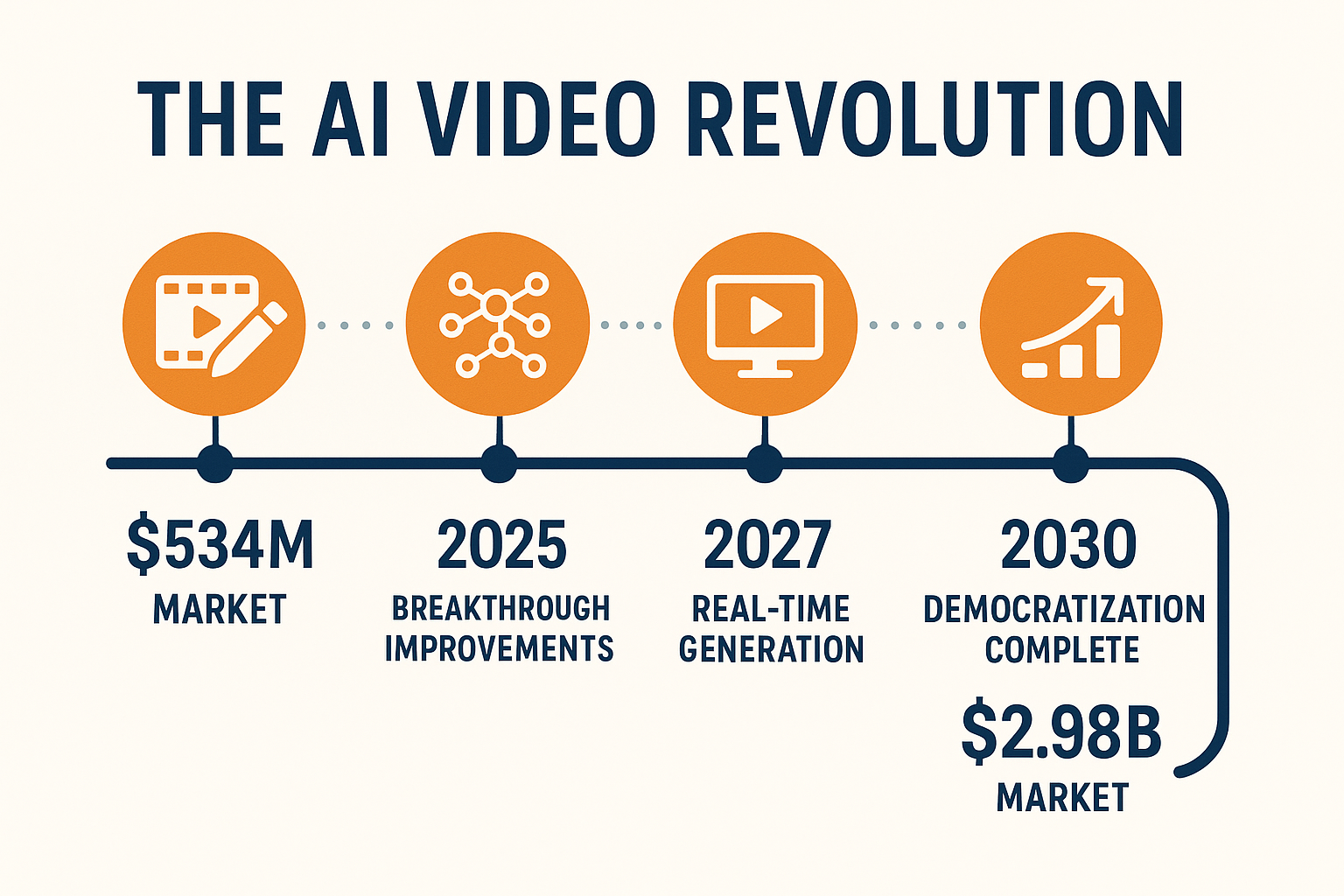
Current State of AI Video Generation
Understanding the three main categories of AI video generation tools: Text-to-Video, Image-to-Video, and Video-to-Video. Each category has specific strengths and limitations that define current capabilities.

The Democratization Revolution
AI video generation is breaking down traditional barriers to video creation. Cost, skill, time, and equipment requirements are dramatically reduced, making professional-quality video accessible to everyone.
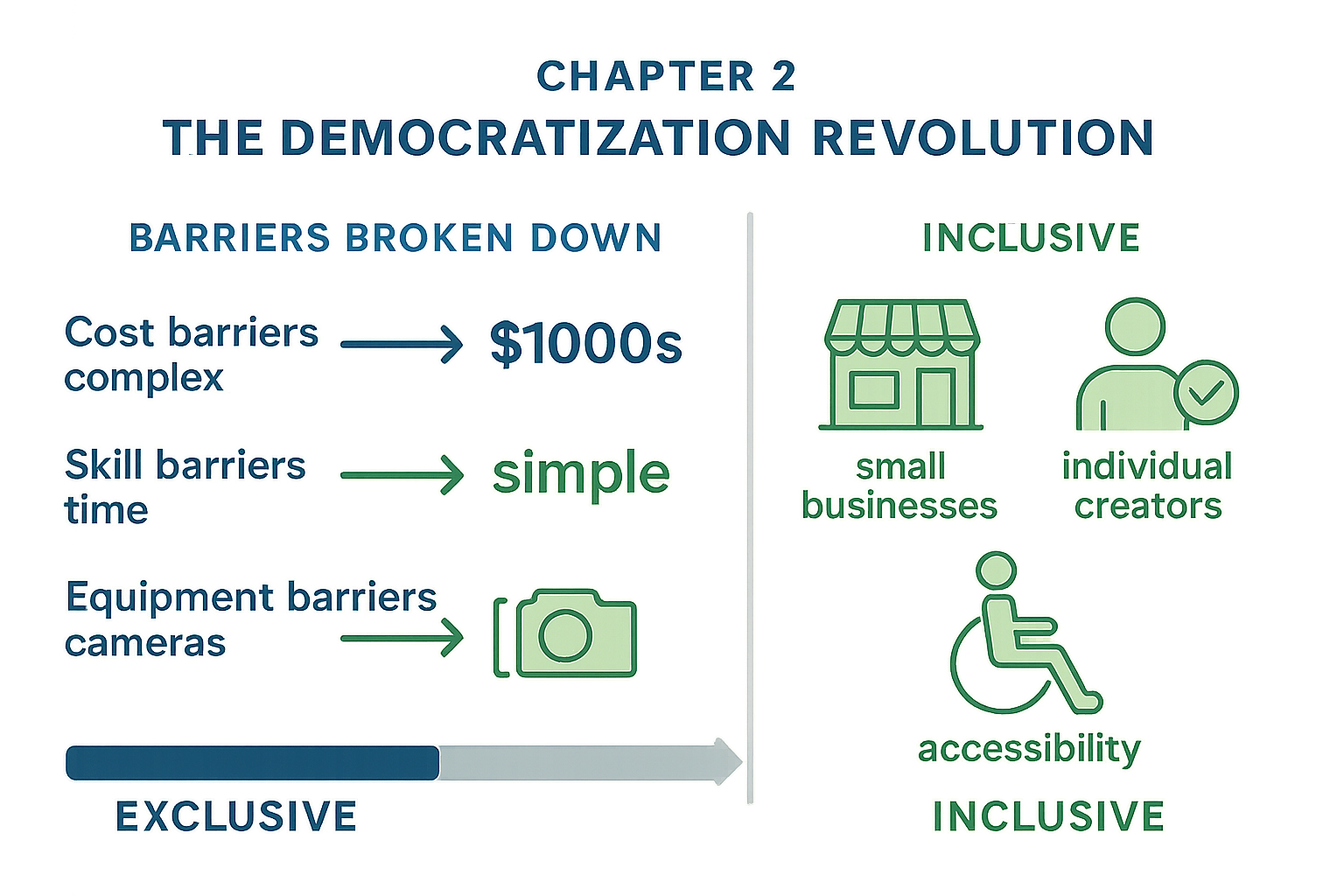
Technology Breakthroughs on the Horizon
The next wave of AI video technology will bring 4K resolution, 60fps frame rates, extended video lengths, and real-time generation capabilities. Neural network improvements will solve current limitations.
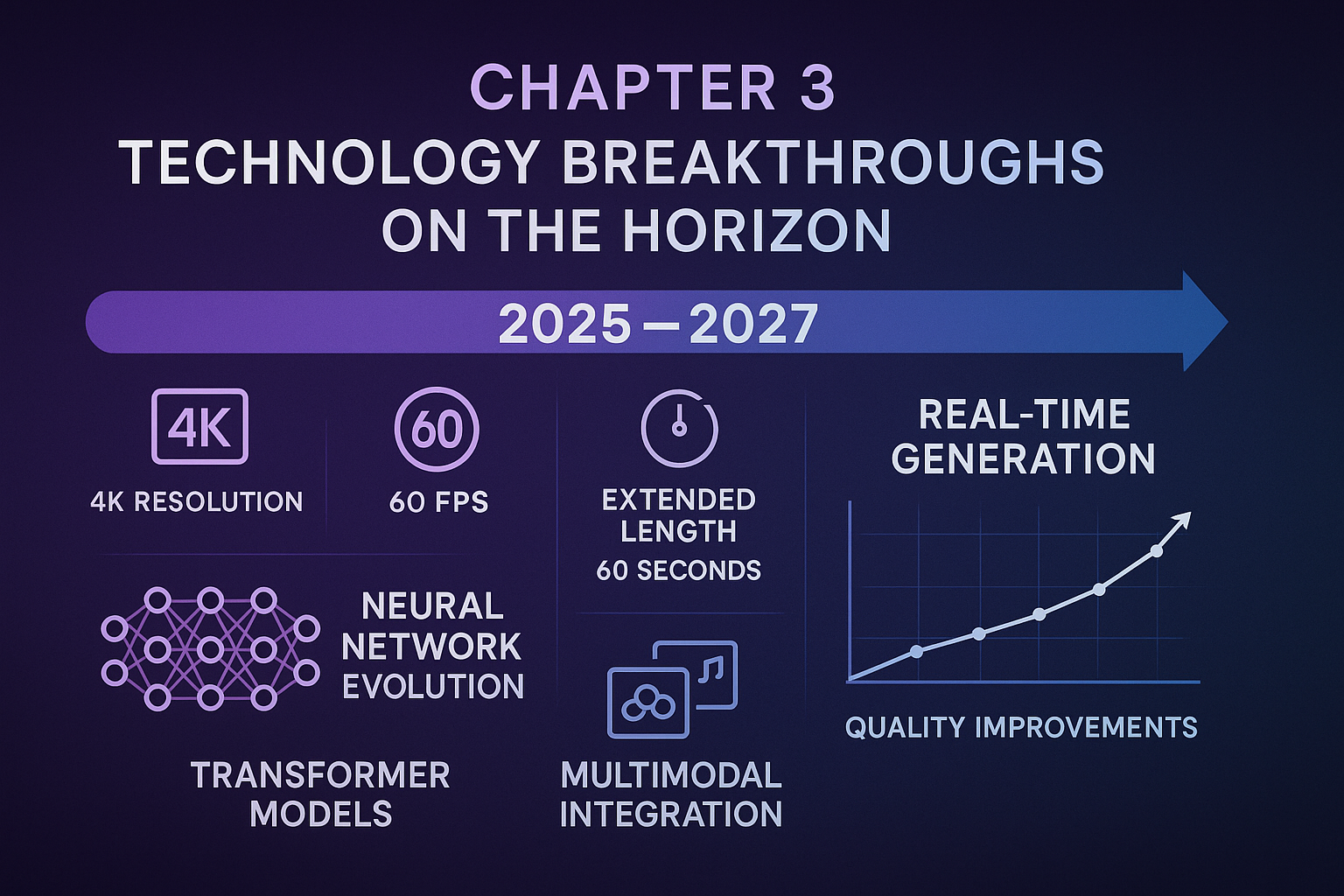
Business Applications and Case Studies
Real-world success stories demonstrate the business impact of AI video generation. From Zoom's 90% faster training production to e-commerce conversion increases of 20-30%, the ROI is proven.
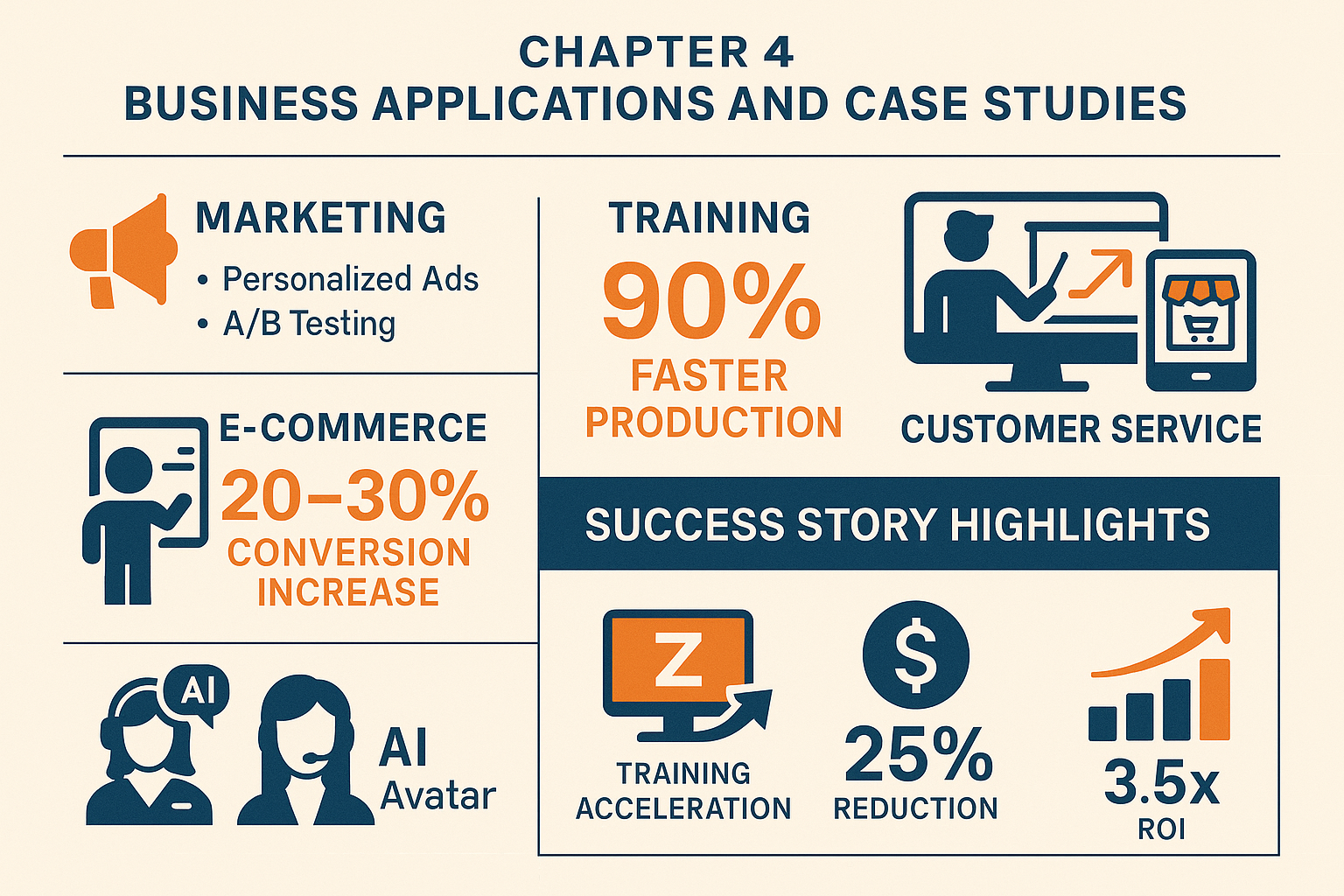
Workflow Optimization and Best Practices
Building an effective AI video workflow requires strategic planning from goal definition to final integration. This comprehensive workflow map shows the complete process with optimization opportunities.
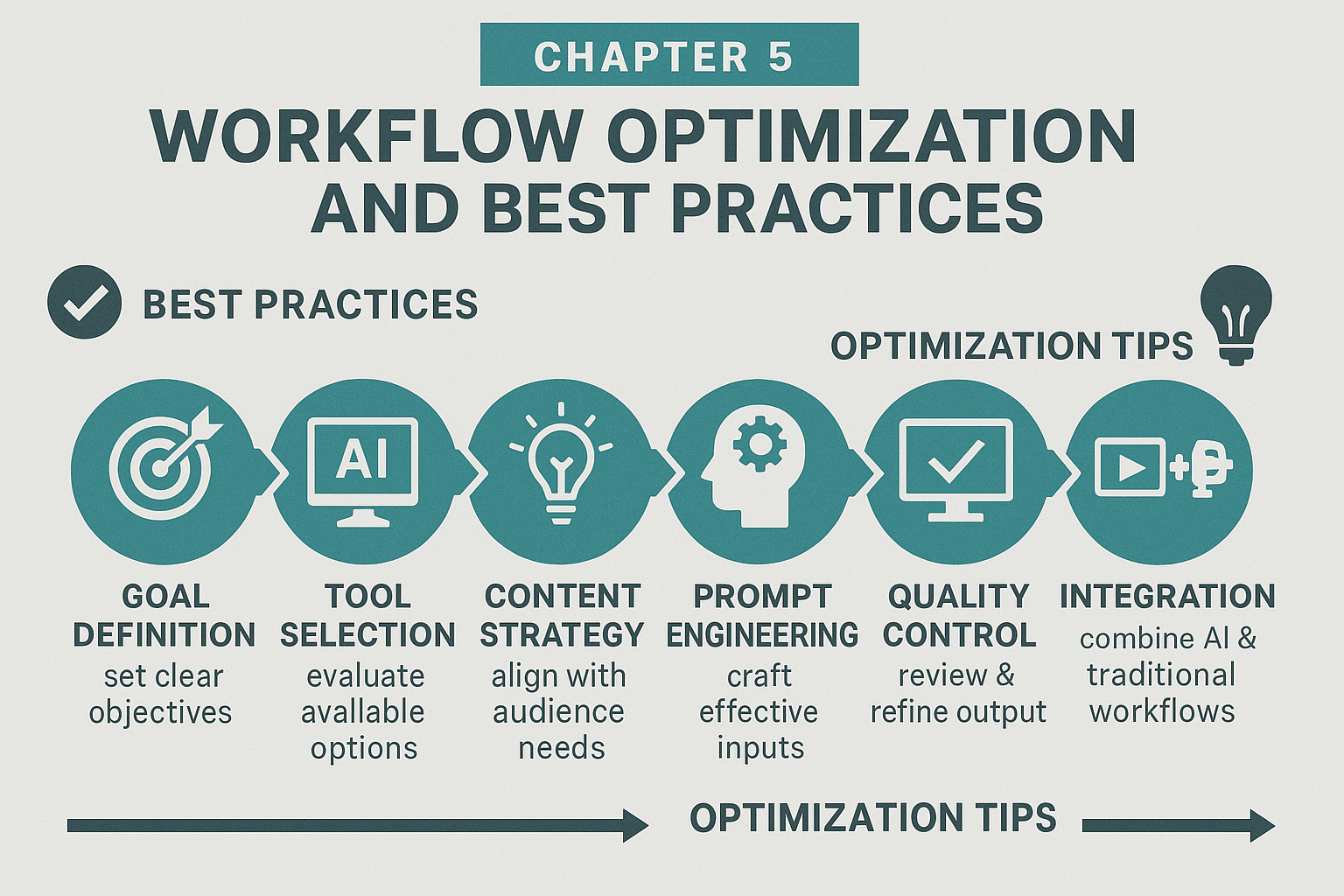
Challenges and Limitations
Current AI video generation faces significant technical, ethical, legal, and bias challenges. Understanding these limitations is crucial for responsible implementation and realistic expectations.
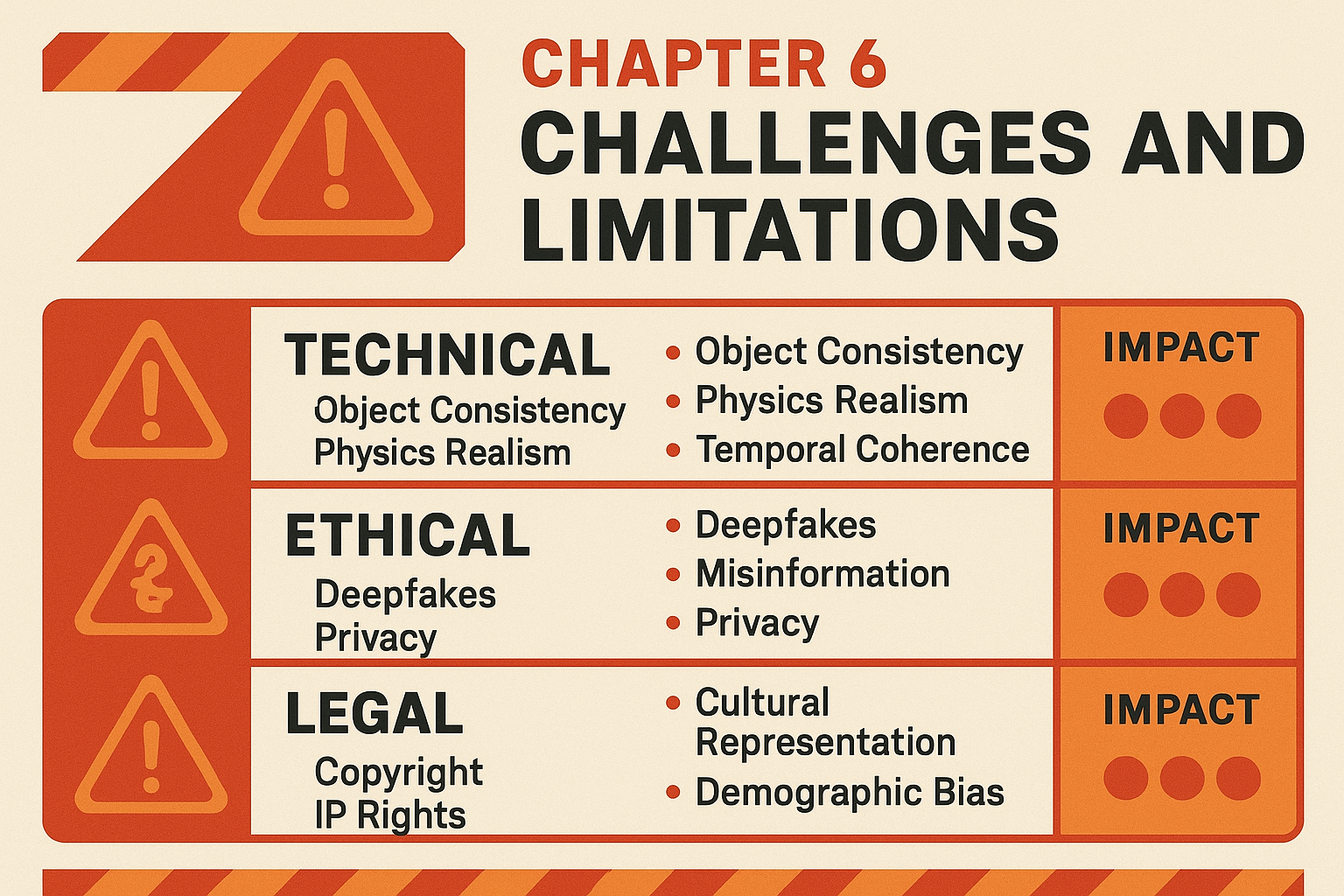
Future Predictions and Scenarios
Three distinct phases of AI video evolution: Short-term improvements (2025-2027), medium-term transformation (2027-2030), and long-term revolution (2030+). Each phase brings unique opportunities and challenges.
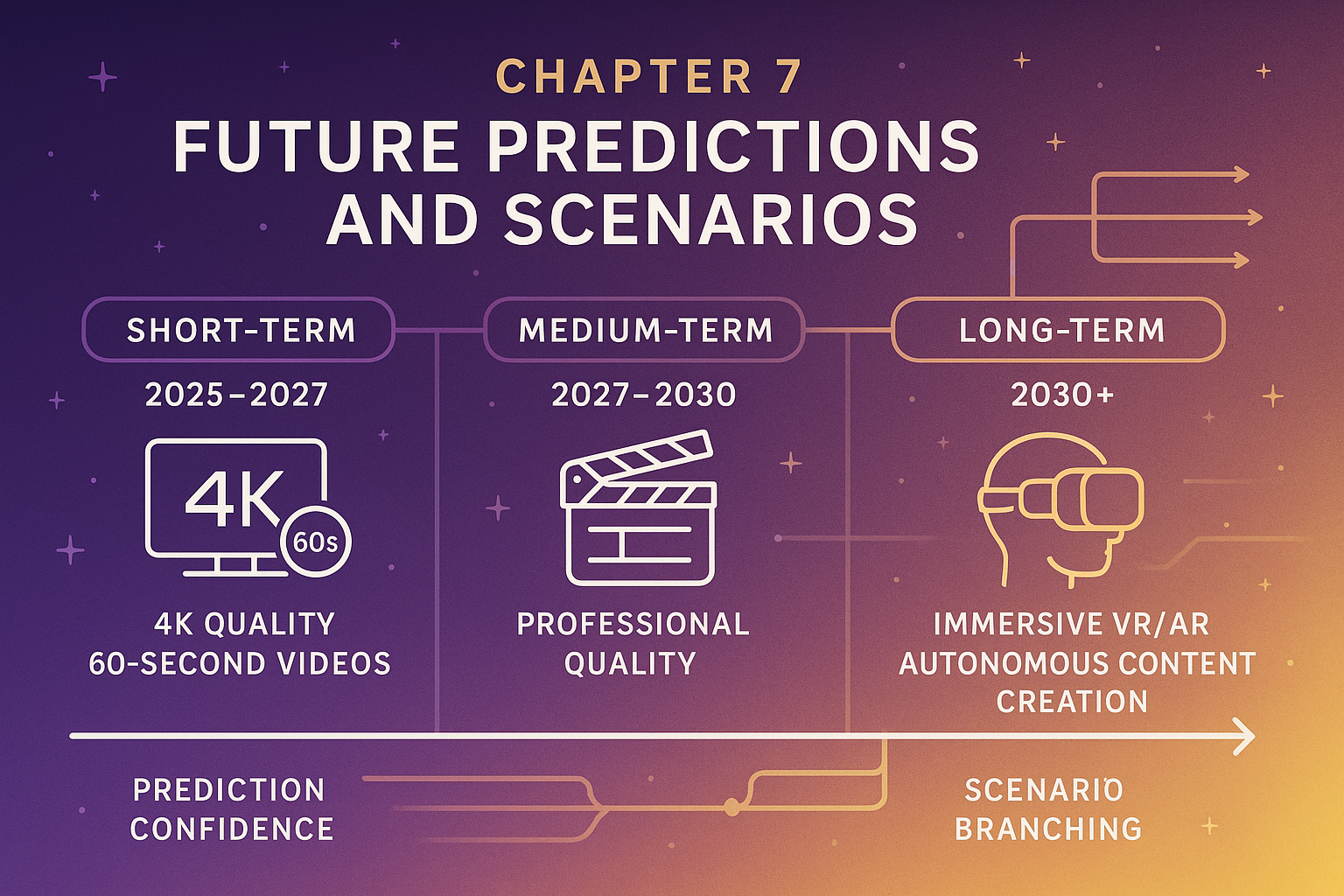
Preparing for the Future
Strategic preparation across four key areas: Skills development, business strategy, technical infrastructure, and individual creator approaches. Success requires proactive planning and continuous adaptation.

